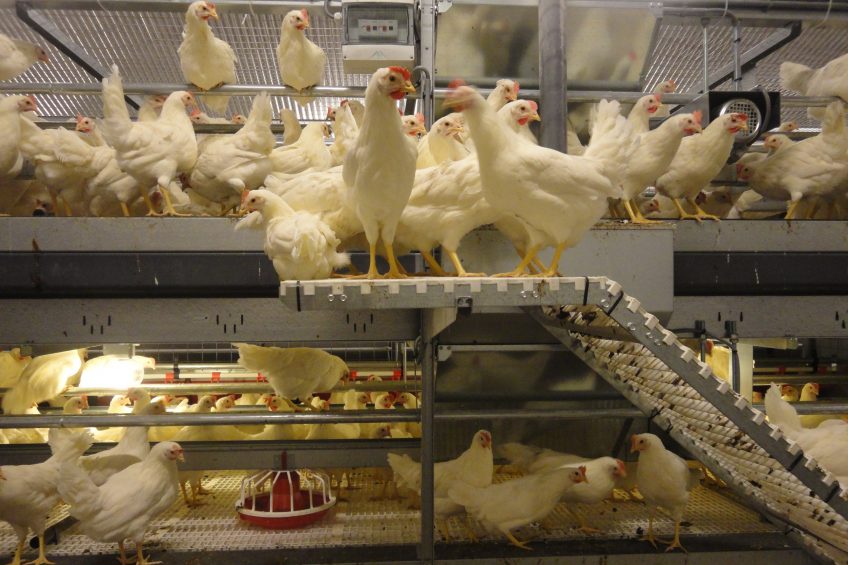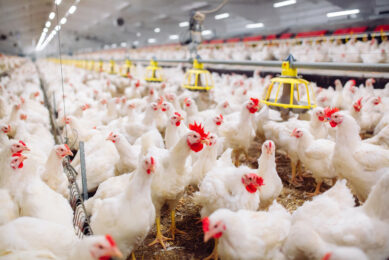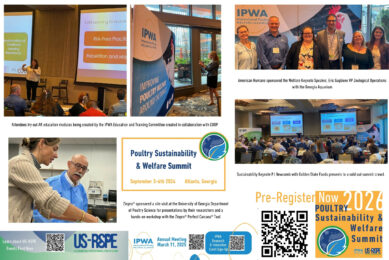Effect of debeaking on laying hen performance

Poultry farmers have concerns about the possibility of keeping non-debeaked laying hens without a loss of production performance. A Dutch study, which examined the behaviour of non-debeaked laying hens, shares these concerns.
From 2018 onwards, it will be forbidden to debeak laying hens in the Netherlands. For poultry farmers affiliated to the German KAT association the ban on beak trimming has been in place since the start of 2017. Dutch animal nutrition facility, Schothorst Feed Research, in collaboration with seven Dutch feed mills (ABZ Diervoeding, AgruniekRijnvallei, CAV Den Ham, E.J. Bos, ForFarmers, Vitelia and Voergroep Zuid), performed a study in which effects of dietary treatments on production performance of debeaked and non-debeaked laying hens were tested. Large differences in performance between debeaked and non-debeaked laying hens, irrespective of dietary treatment, were found.
The study was performed in the practical-scale facility of Schothorst Feed Research. This facility contains 36 experimental aviary pens. Each pen houses 330 Dekalb White laying hens. In total 11,880 hens were used for the study. Half of the hens were debeaked, the other half were non-debeaked. All laying hens were reared at the same rearing farm and had the same history. The laying hens arrived in the layer facility at 17 weeks of age, from which point the production performance and the feather condition of the hens were recorded.
Figure 1 – Comparison of the feed intake for debeaked and non-debeaked Dekalb White laying hens with the breeder recommendations.

Production performance
Striking, is the higher feed intake of 3 g/h/d for the non-debeaked laying hens from the start of the production period. From about 30 weeks of age onwards, the difference was increasing; 5 g/h/d at 40 weeks of age, 11 g/h/d at 50 weeks of age and 17 g/h/d at 60 weeks of age, see Figure 1. The higher feed intake of the non-debeaked hens did not appear to be related to waste of feed. A part of the extra feed intake was converted into egg weight, because non-debeaked hens showed a higher increase for egg weight compared to debeaked hens from 30 weeks of age onwards; 0.6 g/egg at 40 weeks of age, 1.0 g/egg at 50 weeks of age and 1.2 g/egg at 60 weeks of age.
Egg mass was, in general, higher for the non-debeaked laying hens compared to the debeaked hens, despite the on average 0.8% higher laying rate of the debeaked hens.
The higher feed intake of the non-debeaked laying hens was not entirely used for egg production, resulting in a higher feed conversion ratio for these hens; 6 FCR points at 30 weeks of age, 8 FCR points at 40 weeks of age, 16 FCR points at 50 weeks of age and 28 FCR points at 60 weeks of age, see Figure 2.
Figure 2 – Comparison of feed conversion ratio for debeaked and on-debeaked Dekalb White laying hens with the breeder recommendations.

Feather damage
The higher feed intake and feed conversion ratio of the non-debeaked hens seemed to be related to the feather condition. On arrival in the layer facility, the condition of the feathers was excellent and the feather damage at 24 weeks of age was low and comparable between debeaked and non-debeaked laying hens. From 32 weeks onwards, a difference in feather damage was observed, where non-debeaked hens had more feather damage than debeaked hens, see Figure 3. Probably due to the poorer feather condition, mortality rate was higher for the non-debeaked hens (4.9%) compared to debeaked hens (3.0%) in the period from 17 to 68 weeks of age. The higher mortality rate was not considered to be related to cannibalistic behaviour.
Figure 3 – Feather condition for debeaked and non-debeaked Dekalb White laying hens. 0 = undamaged feathers, 5 = bald.

It seemed that the non-debeaked hens were more stressed than debeaked hens, because non-debeaked laying hens showed a different behaviour when held compared to debeaked hens. If debeaked hens were caught, they struggled a little bit. The non-debeaked hens struggled a lot and were more vociferous. This behaviour was already shown at the start of the laying period, so also when the feather damage was low.
Loss of performance
Although the study went without problems (no illness, no cannibalism), it should be concluded that housing of non-debeaked laying hens without loss of performance was not succeeded. Substantial differences in production performance were observed between debeaked and non-debeaked laying hens. Particularly, feed intake was much higher in non-debeaked laying hens, and thereby feed conversion ratio. The higher feed intake seemed to be related with a poorer feather condition of the non-debeaked laying hens. The cause of the poorer feather condition might be stress related, because non-debeaked laying hens showed a different behaviour.
In summary, housing of non-debeaked laying hens needs more attention in terms of management and feed. However, this will not guarantee a successful course of the laying period.






